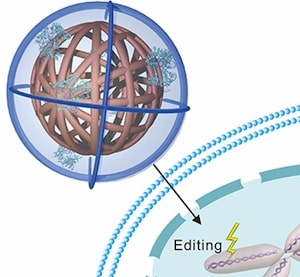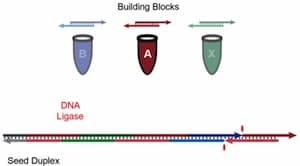DNA nanotechnology produces an artificial molecular machine that changes shape when it encounters a specific antibody or other protein molecule, and emits light to signal the target’s presence.
DNA nanomachine lights up to diagnose diseases


DNA nanotechnology produces an artificial molecular machine that changes shape when it encounters a specific antibody or other protein molecule, and emits light to signal the target’s presence.

Optimized Geek podcast featured Christine Peterson on the future of nanotechnology, human lifespan, artificial intelligence, finding love, and other topics.

Hijacking a viral method of replicating circular genomes, ball-of-yarn-like DNA clews are used to transport the protein and guide RNA molecules needed for gene editing into the cell nucleus.

DNA strands decorating cell membranes like ‘Velcro’ program the adhesion of cells to other cells or to extracellular matrices to build tiny tissue models.

Adding nanotechnology-based optoelectronic sensors to human cells cultured on a chip keeps the cells healthy long enough to replace animal testing with a human liver-on-a-chip.

A new set of design rules enables constructing any wireframe nanostructure, which may lead to new medical applications and new nanomachines.

To educate potential entrepreneurs on strategies for moving discoveries from the benchtop to successful commercialization, Foresight co-sponsored an event in the “Ph.D. to Startup” Workshop Series of the Berkeley Postdoc Entrepreneur Program.

Technology developed by Nanobiosym, founded by Anita Goel, to enable personalized diagnostic testing won the Grand Prize of the Nokia Sensing XCHALLENGE in 2013, and this month was awarded the top prize in the Galactic Grant Competition.

Using the enzyme DNA ligase and small DNA strands as building blocks provides an efficient and less expensive path to a large variety of DNA scaffolds and other structures.

Even without special designs and coatings to promote stability, simple DNA nanomachines can survive in human serum and blood for hours or even days, much longer than expected from previous studies using bovine serum, which has more damaging nucleases than does human serum.